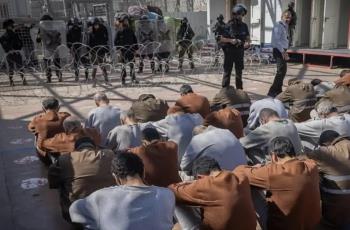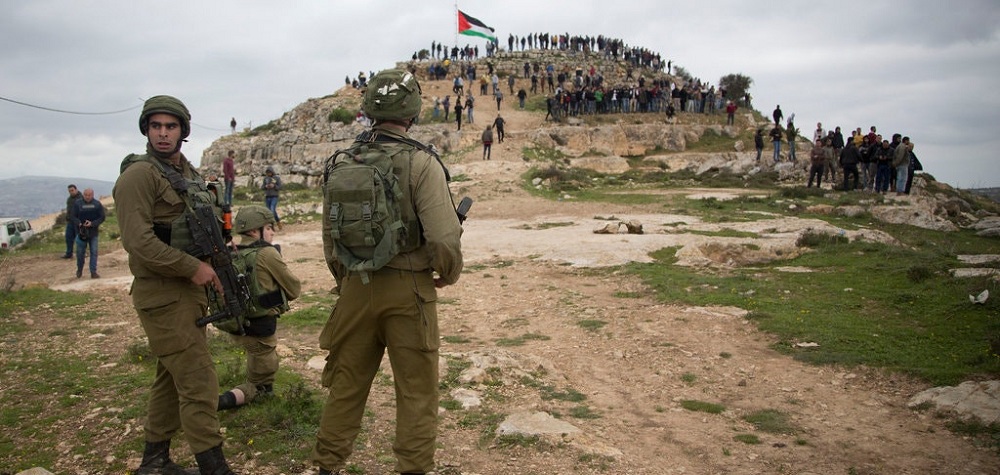Alwaght- As the Israeli regime announced it was preparing to annex parts of the West Bank to the other occupied territories, Hebrew media have warned about Palestinians' outrage and the possible eruption of a new intifada (uprising). This comes as simultaneously a wave of worries has engulfed the Zionist circles who fear suicide attacks in West Bank and other occupied territories.
A look at the agreements of some Palestinian groups with the Israeli regime that brought about nothing to the Palestinian side but further occupation of lands shows that Israelis are now sure that due to their excesses West Bank is moving to arming and start of a new intifada. In fact, many Palestinians are now convinced that taking arms is the only way to save Palestine.
West Bank and a history full of uprisings
Although since 1967 the Israel has controlled much of Palestine, the regime's officials on March 30, 1976 seized thousands of hectares of the Palestinian lands in Al-Jalil in the north of the occupied territories. In reaction to the move which is criminal according to the international law, the Palestinians went on a hunger strike and arranged protests.
The protests led to severe clashes with the Israeli forces. Six Palestinians were killed with the live fire of the Israeli troops and thousands were wounded. The Land Day intifada went on for several months during which 48 Palestinians were killed by the Israelis. People in the Arab world demonstrated in much of the Arab countries in solidarity with the Palestinians.
But this was not the end of the story. A bigger intifada was coming in late 1987, when the Palestinians living under the Israeli occupation in West Bank and Gaza Strip decided to take revenge for another Israeli crime. The killing of four Palestinian workers by an Israeli truck driver in Jabalia Refugee Camp in northern Gaza triggered the first Palestinian intifada, dubbed the “stone intifada.”
The Intifada was not limited to the refugee camp. It spread to all of the villages and towns of West Bank and Gaza.
The secular Palestinian forces joined forces with the Islamists and made the mosques as starting spots of the demonstrations especially on Fridays. Local committees were formed inside the camps to arrange street protests. They worked independently at the beginning but very soon joined the body of coalition comprising Fatah, Popular Front for Liberation of Palestine, and Communist Party.
At the time, the Muslim Brotherhood joined the scene under the “Hamas” title. It announced its first official statement with the start of the 1987 intifada. Islamic Jihad also played its role in the uprising as an active movement.
Palestinian workers went on strike in all cities. Palestinians refused to pay tax to the Israeli government and mothers homeschooled their children. These actions were part of the popular resistance to the Israeli occupation.
Intifada also witnessed some attacks on Israeli targets, like a 1988 attack in Dimona near Negev desert on a bus carrying workers to the nuclear reactor. The operation served as a privilege in the Palestinian hand in swap deals.
Palestinians' lack of arms for self-defense in the face of the armed-to-the-teeth Israeli army brought about the second intifada which is known as the “knife intifada.” The Palestinians in a string of attacks killed and wounded Israeli settlers and troops. Israeli Defense Minister Yitzhak Rabin mobilized over 80,000 forces and suppressed unarmed Palestinians with “break their bones” policy.
During the second intifada, the use of the Palestinian icons was banned. Flying the Palestinian flag was outlawed. Even using the word Palestine was banned. Tens of Palestinian artists were sent to jail for pro-intifada art works. In addition to the destruction of 1228 Palestinian homes, during the intifada, the Israelis killed thousands of civilians including 241 children and wounded some 90,000 others.
Still, the Israeli army could not put down the uprising. It continued to 1993, the year the Oslo Agreements were signed between the Palestinian Liberation Organization (PLO) and the Israeli regime. The leaders of the PLO abused the intifada for peace negotiations with the occupiers.
The negotiations finally led to the recognition of the Israeli regime and the Palestinians were identified as “Arab refugees.” The peace deal brought no privileges to the Palestinians and trampled the blood of about 3,000 Palestinians killed by the Israelis during the intifada.
The bitter experience of this intifada pushed the Palestinian groups in the second intifada (started in 2000) to develop themselves militarily. The Izz ad-Din al-Qassam Brigades, as the armed wing of Hamas, developed their arms and dealt hard blows to the Israelis.
The second intifada, ended in 2005 with the Sharm El Shaikh summit, strengthened the Palestinians’ belief that a vicious enemy should only be faced by resistance and struggle.
In 2015 a third intifada was born so spontaneously with the intention to liberate Al-Quds (Jerusalem). In the third intifada, people organized voluntarily, signaling that the Palestinians are growing the notion that negotiations and compromises to Tel Aviv only deepened its expansionist thirst. So the resistance is more than any other time the best option to liberate the Palestinian territories.
The need for West Bank to arm
Although the Palestinian Authority in reaction to the West Bank annexation plan ended all of the security agreements and cooperation with the Israeli regime and insisted that there will be no compromises on the plan to annex West Bank to the other occupied territories, the West Bank residents ,regarding the results of the two options of resistance and compromises, understand that resistance is viable. This notion will give birth to a new chapter of popular mobilization that will take arms against the Israeli regime even if the Palestinian Authority opposes armed struggle and stops at its ostensibly tough stance on the Israeli annexation of West Bank.
The pro-arming tendency of the Palestinian people becomes more serious as recently sources said that US Arab allies tend to accept Netanyahu’s annexation plan. Some reports even talked about behind-the-scene negotiations between the Palestinian Authority and the Israeli security apparatus.
These issues taken into account, the historical memory of the resistant Palestinian groups and the West Bank residents warn them about new compromises to Tel Aviv that mark a new step towards foiling the moves towards the liberation of Al-Quds. As a result, the Palestinian groups grow more sensitive more than ever and brace for a new intifada. It can be said with confidence that if there would be no betrayal of the Palestinians caused by some Arab puppet regimes and the Palestinian Authority and Fatah choose not to make any concessions to the Israeli regime— both of them disarmed West Bank through deals with Tel Aviv—, the people of West Bank bear the potentials for a new intifada and even an armed uprising against the Israeli occupation.



























